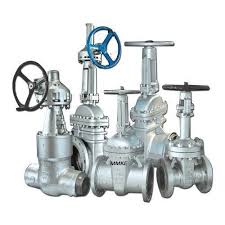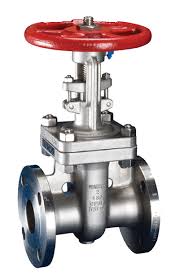Industrial Gate Valve

The Application of Industrial Gate Valve
Industrial Gate Valve is a crucial component in various industrial applications, including cooling tower systems. Serving as a cooling tower isolation valve, it controls the flow of water within the tower, enabling efficient cooling processes. Rotork and Cameron are renowned brands offering reliable Industrial Gate Valves known for their durability and performance. These valves play a pivotal role in regulating fluid flow, ensuring optimal operation and safety. Whether it’s managing water flow in cooling towers or other industrial processes, selecting the right valve is essential for efficiency and system integrity. Cooling tower valves companies often rely on these robust valves to maintain precise control and prevent system malfunctions.
What are Industrial Valves?
Industrial valves are mechanical devices designed to control the flow of fluids (liquids, gases, or slurries) within a piping system. They regulate the direction, pressure, and volume of the fluid flow by opening, closing, or partially obstructing the passage. Industrial valves are used in a wide range of applications across various industries, including oil and gas, petrochemical, water and wastewater treatment, power generation, chemical processing, pharmaceuticals, and manufacturing. These valves come in different types, such as gate valves, globe valves, ball valves, butterfly valves, check valves, and plug valves, each serving specific functions based on the requirements of the system and the nature of the fluid being controlled.
What Is Industrial Gate Valve?
An Industrial Gate Valve is a type of valve used to control the flow of fluid within industrial pipelines. It consists of a gate or wedge-shaped disc that slides into the flow stream to block or allow the passage of fluid. These valves are commonly used in various industries, including oil and gas, petrochemical, water treatment, and power generation. They provide reliable shut-off and regulation capabilities, making them essential components in industrial processes where fluid control is critical for operational efficiency and safety.
Features of Industrial Gate Valves
- Sealing Design: The valve’s seal allows for packing replacement under pressure during maintenance, preventing leaks and saving time.
- Threaded Stem Nut: A long nut extends thread life and allows handwheel removal when fully open.
- Sealing Gaskets: Different gaskets are used based on valve class for reliable sealing.
- Internal Guiding: Keeps the gate centered during operation, ensuring stable sealing performance.
Advantages of Industrial Gate Valve
- Robust Construction: Industrial gate valves are built to withstand high-pressure and high-temperature conditions commonly found in industrial applications.
- Excellent Sealing: With their wedge-shaped gate design, these valves provide tight sealing, minimizing leakage even under challenging operating conditions.
- Low Pressure Drop: The straight-through flow path of gate valves results in minimal pressure drop across the valve, ensuring efficient fluid flow.
- Bi-Directional Flow: Gate valves are designed to allow flow in both directions, providing flexibility in piping systems.
- Versatile Applications: Industrial gate valves find applications in various industries, including oil and gas, petrochemical, power generation, water treatment, and more.
- Easy Maintenance: Gate valves are relatively simple in design, making them easy to install, operate, and maintain, reducing downtime and maintenance costs.
- Durable Materials: They are typically constructed from robust materials such as carbon steel, stainless steel, or ductile iron, ensuring long-term reliability and durability.
- Wide Range of Sizes: Available in a wide range of sizes, industrial gate valves can accommodate different flow rates and system requirements.
The Specifications of Industrial Gate Valve
| Specification | Description |
|---|---|
| Type | Industrial Gate Valve |
| Ball Material | N/A |
| Attachment Type | Flanged, Welded, Threaded |
| Thread Standard | ANSI, DIN, JIS, BS |
| Thread Size | Various sizes ranging from 1/2″ to 36″ |
| Body Material | Cast Iron, Ductile Iron, Carbon Steel, Stainless Steel, etc. |
| Safe for Use With | Water, Oil, Gas, Steam, Chemicals, etc. |
| Handle Type | Handwheel, Gear, Actuator |
| Handle Material | Steel, Stainless Steel, Aluminum, etc. |
| Maximum Working Pressure psi | Varies depending on size and material |
| Maximum Working Pressure bar | Varies depending on size and material |
| Operating Pressure | Typically between 0 to 5000 psi |

The Parameter of Industrial Gate Valve
- Sealing Design: Equipped with a specialized seal, allowing for pressure-packed packing replacement during maintenance, ensuring no leakage during the process.
- Thread Stem Nut: Features a long-threaded stem nut, enhancing thread life and enabling the handwheel’s removal in the fully open position.
- Gasket Materials: Utilizes flexible graphite gaskets for 150 Class gate valves, spiral wound gaskets for Class 300 & 600 valves, and metal ring gaskets for gate valves of 900 or greater Class.
- Integral Guide: Incorporates an integral guide within the valve body to maintain the wedge’s alignment during opening and closing, ensuring stable sealing performance.
The Operation Theory of Industrial Gate Valve
The operation theory of an Industrial Gate Valve involves a linear motion to control the flow of fluid. When the valve is open, the gate is lifted to allow the fluid to pass through. Conversely, when the valve is closed, the gate is lowered to obstruct the flow. This mechanism is distinct from the rotational motion of ball valves and the linear motion with a spherical plug of globe valves. Furthermore, it differs from the quarter-turn operation of butterfly valves and the rotational motion of ball valves.
The Parameters Table of Industrial Gate Valve
| Parameter | Specification |
|---|---|
| Type | Gate Valve |
| Body Material | Stainless Steel, Carbon Steel, Cast Iron, etc. |
| Bonnet Material | Stainless Steel, Carbon Steel, Cast Iron, etc. |
| Seat Material | Metal, Resilient |
| Stem Material | Stainless Steel, Carbon Steel, etc. |
| Disc Material | Stainless Steel, Carbon Steel, etc. |
| Connection Type | Flanged, Threaded, Welded |
| Thread Standard | ANSI, BS, DIN, JIS, etc. |
| Thread Size | Various sizes available |
| Pressure Rating | Class 150 – Class 2500, PN 10 – PN 420 |
| Temperature Range | Up to 1000°C (1832°F) |
| Safe for Use With | Water, Oil, Gas, Steam, etc. |
| Handle Type | Handwheel, Gear Operator, Actuator |
| Maximum Working Pressure (psi) | Depending on size and class |
| Maximum Working Pressure (bar) | Depending on size and class |
| Operating Pressure | Depending on application |
